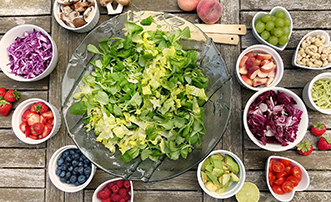Have you ever wondered where MyPlate started?
Prior to the Food Guide Pyramid being released to the public, there were many different food guides. The very first food guide dates back to 1916 and focused on “Food for Young Children” and “How to Select Food.”
Food guides from the 1940s through the 1980s:
- 1940s – A Guide to Good Eating
Guidelines were based off food groups and household measures. - 1956-1970s – Food for Fitness, a Daily Food Guide
These were goals for receiving adequate nutrients. It included specific amounts of food from the four food groups.
It did not include guidelines for fat, sugar, and calorie intake. - 1979 – Hassle-Free Daily Food Guide
The guidelines were very similar to the previous guides, but now showed that we should have a moderate intake of fats, sweets, and alcohol. - 1984 – Food Wheel: A Pattern for Daily Food Choices
Included goals for receiving enough nutrients and showing nutrient moderation. - 1992 – United States Department of Agriculture (USDA) created the Food Guide Pyramid
The food pyramid is divided into sections. Each section represents a food group and the recommended intake for each food group. The top of the pyramid is smaller indicating that our food intake of those foods should be less. The bottom of the pyramid is larger indicating that we should have more of these foods in our diet.
This approach was developed using customer research.
- 2005 – MyPyramid Food Guidance System was rolled
out to the public
The illustration was simplified, and a section was added for oils and the concept for physical activity.
Displays variety, moderation, and proportion. - 2011 – MyPlate was introduced as an updated, more visually appealing and easier to follow version of the Dietary Guidelines
MyPlate focuses on variety, amount, and nutrition of foods
Fruits-1/4 of your plate should be fruit. Try to eat seasonally. Fruits in season taste the best and have the most nutrients.
Vegetables– 1/4 of your plate should be vegetables. Eat different colored vegetables to get a wide variety of nutrients.
Grains-1/4 of your plate should be grains, specifically whole grains. Some examples are whole grain pasta, brown rice, and whole wheat bread.
Protein-1/4 of your plate should contain protein. Beef, pork, poultry, seafood, nuts, and beans are all great sources of protein.
Dairy-Try to have dairy at every meal. It contains a lot of nutrients and protein. Opt for a yogurt for breakfast or have 8oz of low-fat milk at your meals.




